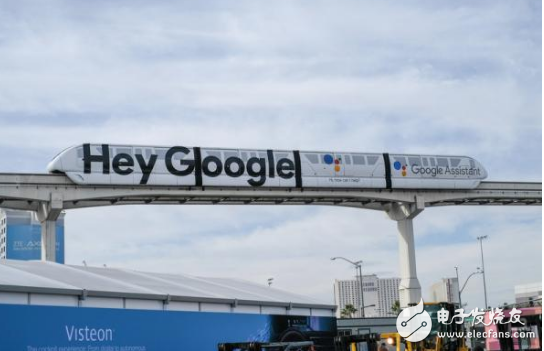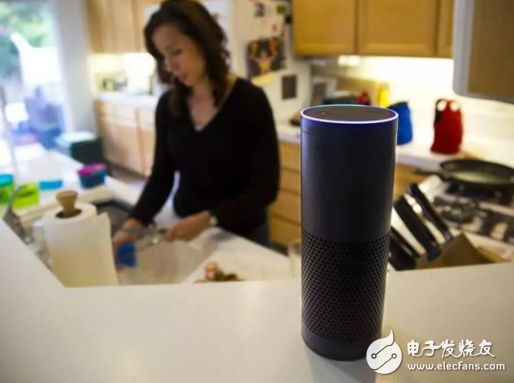Smart home is no longer a new word. In 2014, Google bought NEST with huge sums of money to set off a craze. This year, Google took the voice assistant to the CES show, and in the casino Hey, Google advertising slogans are everywhere to promote voice assistants, high-profile The show has a smart life scene based on the voice assistant Google Assistant, bringing the world to another climax of smart home.

Data from different data survey institutions show that smart home is the market with the most growth potential. In the next few years, the global market will grow to hundreds of billions of dollars. Similarly, the domestic market will reach hundreds of billions of yuan.
Such a huge and attractive cake, in the view of Yang Jianyong of "Jianzhi Internet of Things", the giants will naturally not miss it. Companies are hoping for consumer electronics to open up a new market, from smart watches in the early years to smart speakers today. , Becoming the standard smart hardware of various technology giants, hoping to get a share in the direction of the consumer Internet of Things.
With the upgrading of people’s living and consumption, there are trillions of market opportunities. In the past year, all walks of life have actively promoted the implementation of smart homes. Apple has actively expanded the HomeKit ecological platform. Google and Amazon have used voice to pry open the home entrance. In the US market, Smart homes are showing a vigorous development trend. Therefore, smart speakers have also entered tens of millions of households in the United States, becoming one of the most popular smart hardware.
From the perspective of the global smart speaker structure, according to the latest data from Strategy Analyti, Amazon and Google continue to lead the way. Both account for more than 70% of the global market share. Apple, which dominates smartphones and smart watches, has billions of loyal fans. It is also impossible to open the market. In the United States, only 25% of users will consider using Apple's HomeKit smart home platform, even lagging behind Samsung.

When purchasing smart homes, nearly 50% of users hope to be compatible with Amazon Echo and voice mobile Alexa, followed by Google. As the market with the highest penetration of smart homes in the world, the popularity of smart homes in the United States is as high as 58%, but mainly concentrated In the situation where Amazon and Google are fighting for supremacy, Amazon in particular has set a global model. Its artificial intelligence assistant Alexa has more than 30,000 functions. There are more than 10,000 smart devices on the market that can be interacted and controlled through Amazon Alexa.
This model is very popular among American families. So far, building a smart home ecological model with voice as the core and combining smart speakers as the family hub has become the direction of many technology companies.
Among them, Google is the first Internet giant in the United States to follow this model, benefiting from the rapid growth of Google Home speaker shipments. Only in the first quarter of 2018, the year-on-year growth rate was as high as 709%, far ahead of other competitors. This is after Amazon Echo, Google Home has become the most popular smart speaker in the United States, the smart speaker embedded with the Google Assistant voice assistant, and the ecosystem based on this, I want to make AI assistants ubiquitous and seize the entrance of smart homes.
The two giants are fighting fiercely in the United States. Amazon took the lead in launching an offensive against competitors in the direction of smart homes. It directly pointed to major competitors such as Google. It even blocked competitors by blocking its platform and no longer sold Google's Nest smart home products. , And large-scale acquisitions around the smart home ecology,
At the same time, Amazon made a large-scale acquisition of the smart home ecosystem. Earlier, it acquired Ring, which is a smart doorbell manufacturer, for more than $1 billion. This huge acquisition shocked the industry and caused heated discussions. In my opinion, Ring will integrate products and services such as Alexa to consolidate Amazon’s competitiveness with Google. The products overlap with Google’s Nest products. Therefore, in order to block Google, Amazon will stop selling its smart home related products.
Prior to this, Amazon also acquired the startup company Blink to strengthen the security of smart homes. Starting from a series of investment and mergers, it can be seen that Amazon is ambitious in the smart home market to build a huge super portal to compete for the US market.
How does TFT work?
TFT is the abbreviation of "Thin Film Transistor", generally refers to thin film liquid crystal displays, but actually refers to thin film transistors (matrix)-can "actively" control each independent pixel on the screen, which is The origin of the so-called active matrix TFT (active matrix TFT). So how exactly is the image produced? The basic principle is very simple: the Display Screen is composed of many pixels that can emit light of any color, and the purpose can be achieved by controlling each pixel to display the corresponding color. In TFT LCD, backlight technology is generally used. In order to accurately control the color and brightness of each pixel, it is necessary to install a shutter-like switch after each pixel. When the "blinds" are opened, light can pass through, and " When the shutters are closed, light cannot pass through. Of course, technically, it is not as simple as the one just mentioned. LCD (Liquid Crystal Display) utilizes the characteristics of liquid crystals (liquid when heated, and crystallized into solid when cooled). Generally, liquid crystals have three forms:
Smectic liquid crystal similar to clay
Nematic liquid crystal resembling a fine matchstick
Cholestic liquid crystal
The liquid crystal display uses filaments, and when the external environment changes, its molecular structure will also change, and thus have different physical properties-it can achieve the purpose of letting light through or blocking light-which is just like the blinds just now.
Everyone knows the three primary colors, so each pixel on the display screen needs three similar basic components described above to control the three colors of red, green, and blue respectively.
The most commonly used one is twisted nematic TFT LCD (Twisted Nematic TFT LCD). Existing technologies vary greatly, and we will cover them in detail in the second part of this article.
There are grooves on the upper and lower layers. The grooves on the upper layer are arranged longitudinally and the grooves on the lower layer are arranged horizontally. When no voltage is applied to the liquid crystal in its natural state, the light emitted from the light emitting layer of the twisted nematic TFT Display working principle diagram of Figure 2a will be twisted by 90 degrees after passing through the interlayer, so that it can pass through the lower layer smoothly.
When a voltage is applied between the two layers, an electric field is generated. At this time, the liquid crystals are aligned vertically, so the light will not be twisted-the result is that the light cannot pass through the lower layer.
(2) TFT pixel structure: The color filter is divided into red, green, and blue according to the color, which are arranged on the glass substrate to form a group (dot pitch) corresponding to a pixel. Each monochromatic filter is called It is a sub-pixel. In other words, if a TFT display supports a maximum resolution of 1280×1024, then at least 1280×3×1024 sub-pixels and transistors are required. For a 15-inch TFT display (1024×768), then a pixel is about 0.0188 inches (equivalent to 0.30mm), for an 18.1-inch TFT display (1280×1024), it is 0.011 inches (equivalent to 0.28mm) .
As we all know, pixels are decisive for the display. The smaller each pixel is, the larger the maximum resolution that the display can achieve. However, due to the limitation of the physical characteristics of the transistor, the size of each pixel of the TFT at this stage is basically 0.0117 inches (0.297mm), so for a 15-inch display, the maximum resolution is only 1280×1024.
Tft Lcd Module,Lcd Liquid Crystal Display Module,Lcd Module,Lcd Screen Module
ESEN Optoelectronics Technology Co., Ltd, , https://www.esenoptoelectronics.com